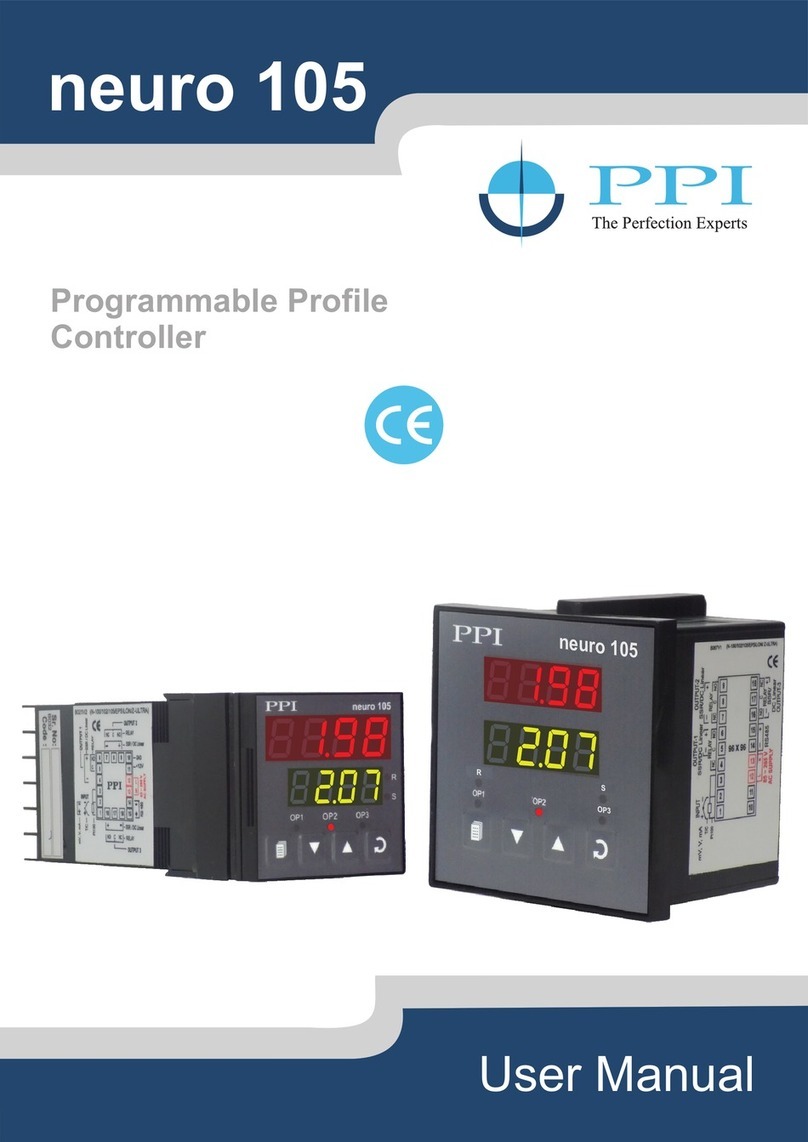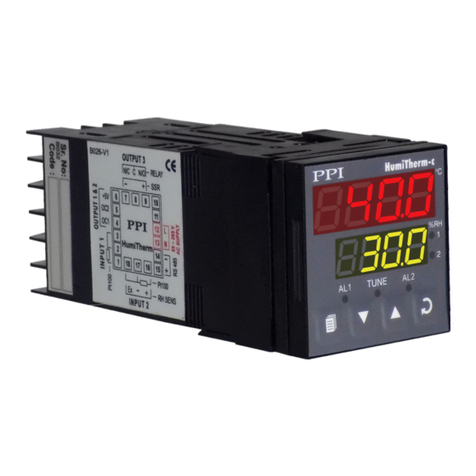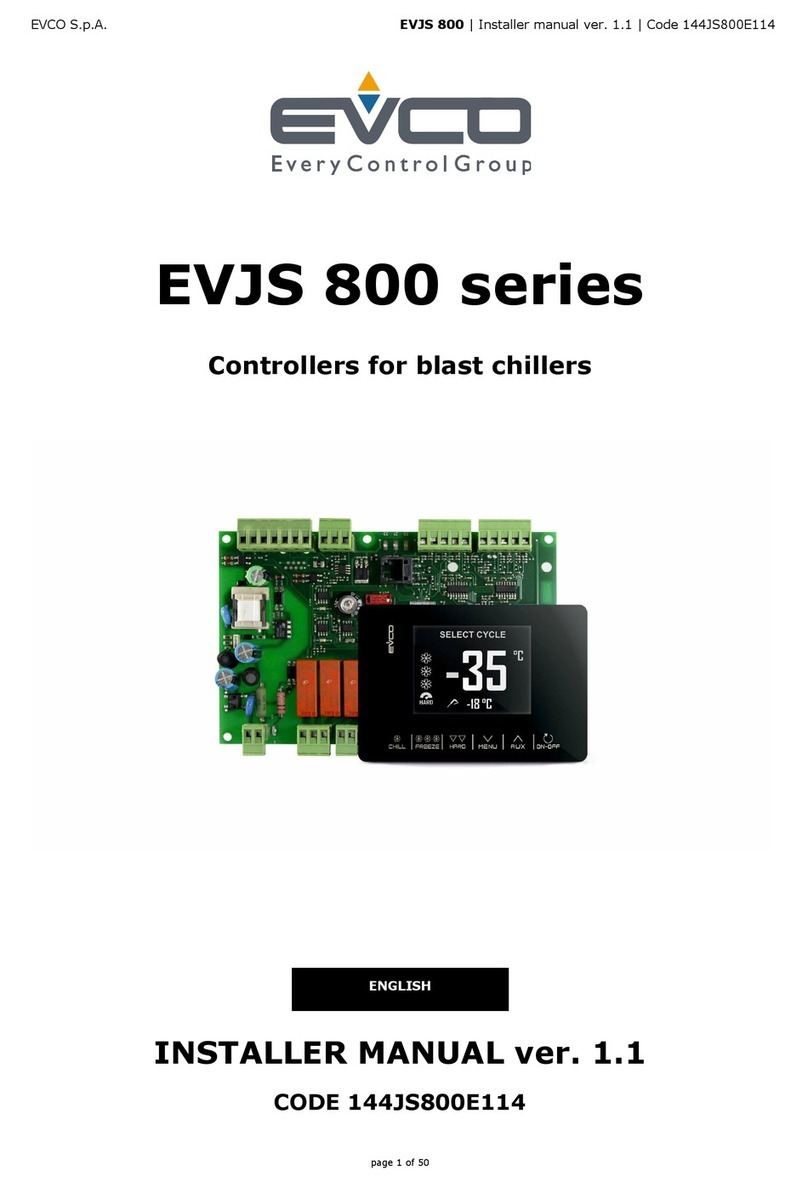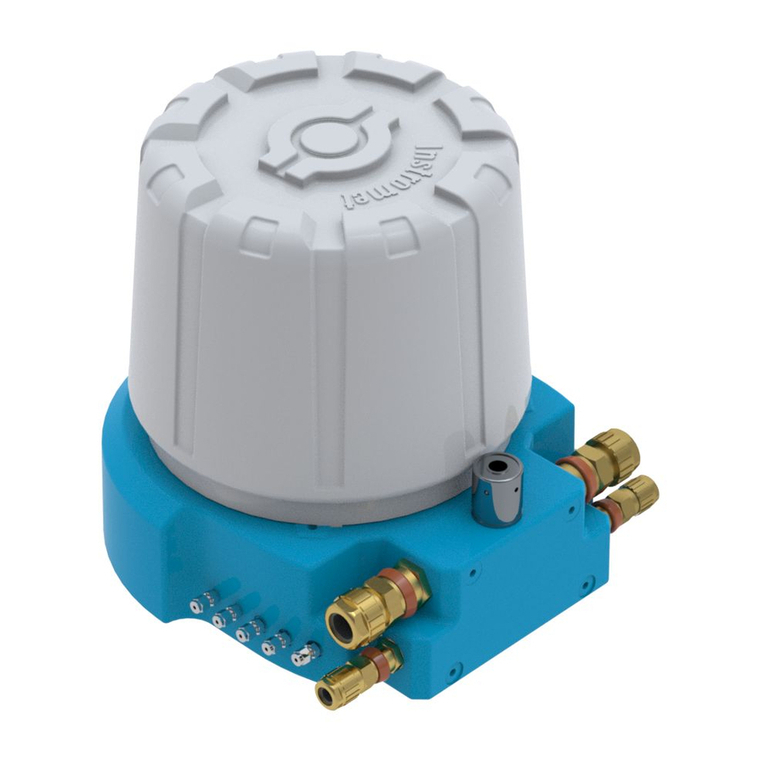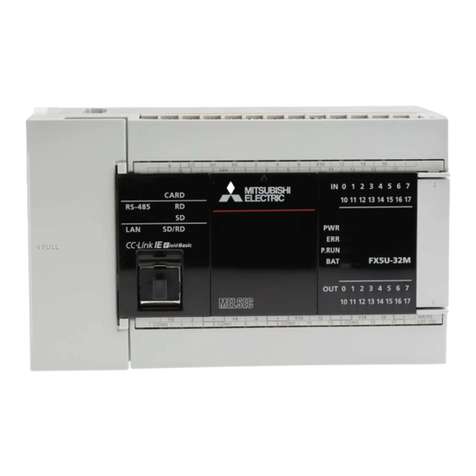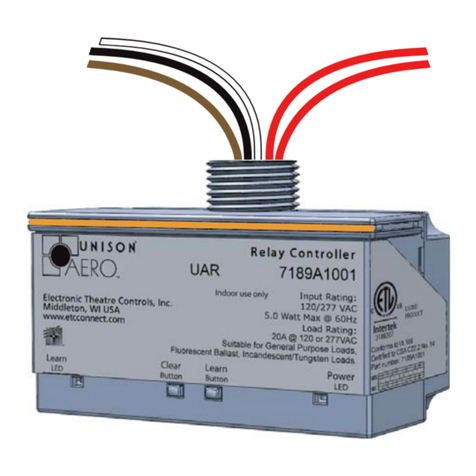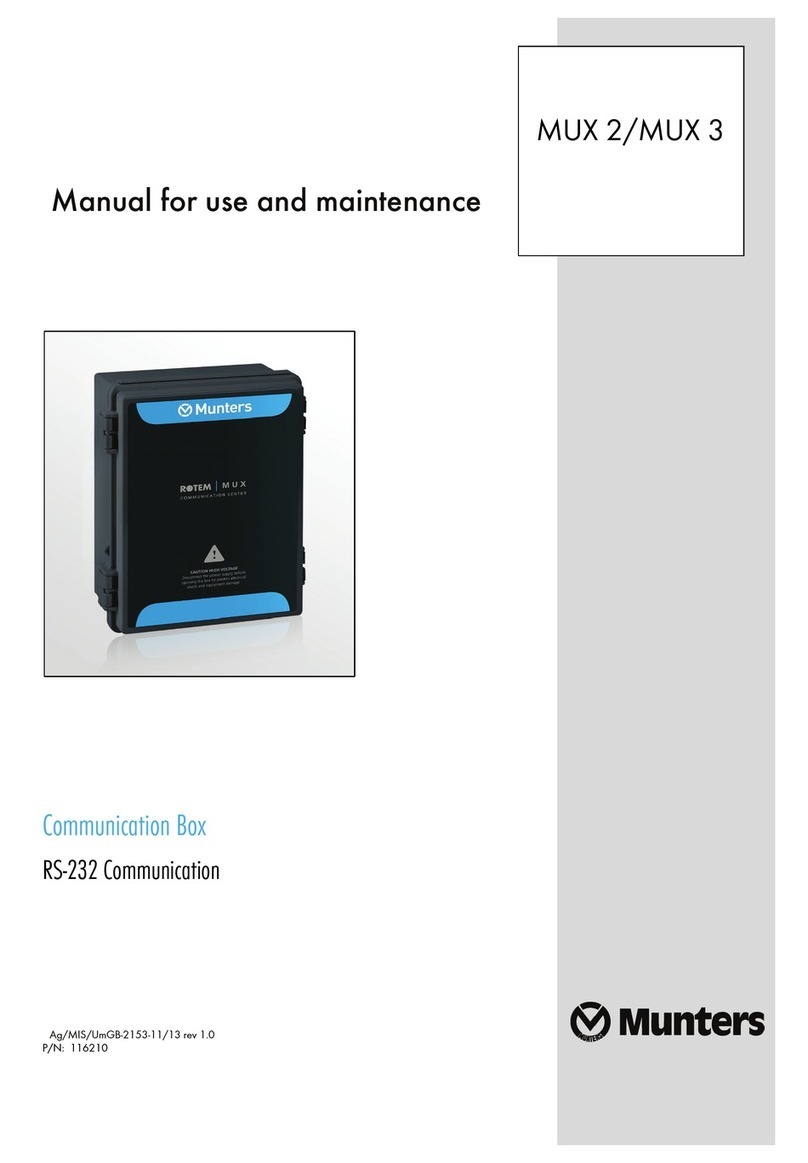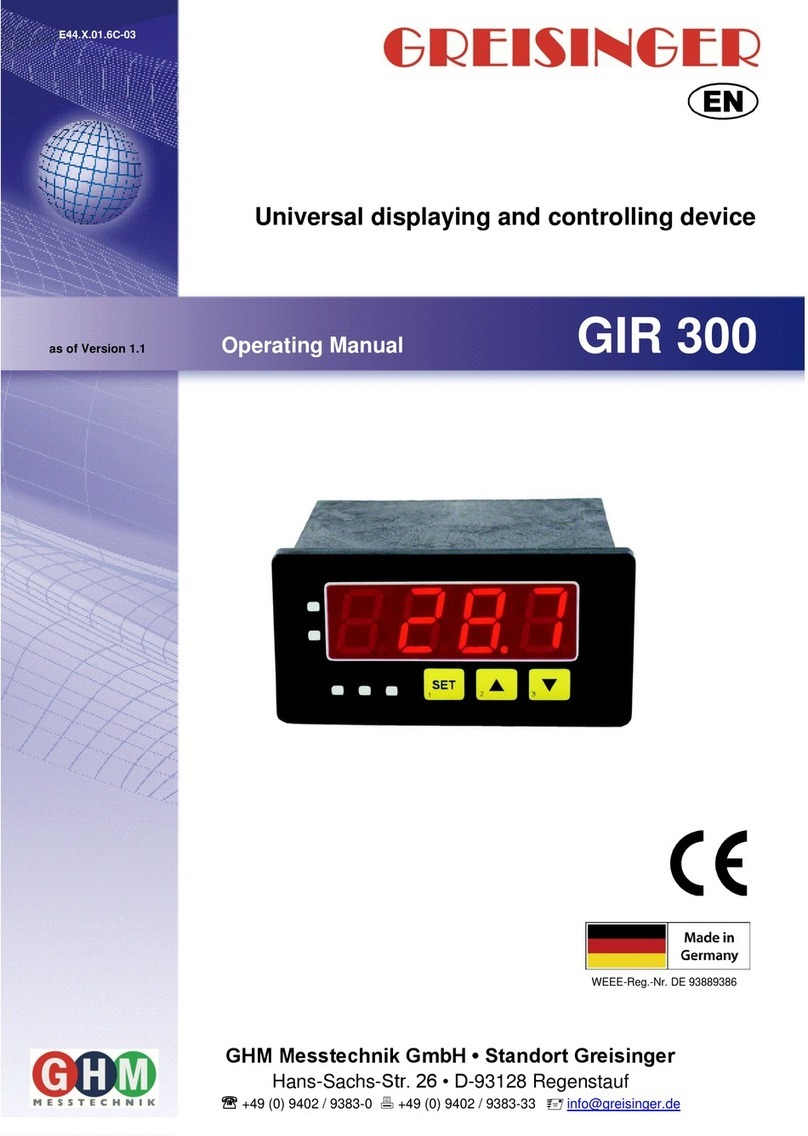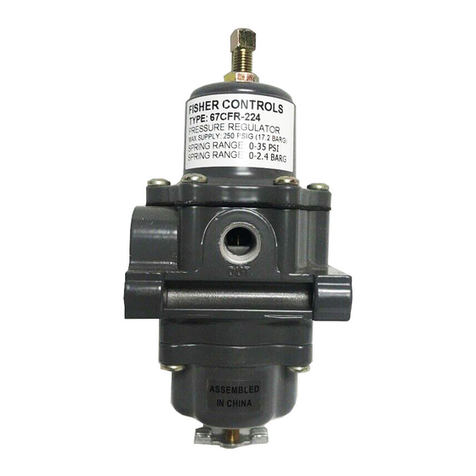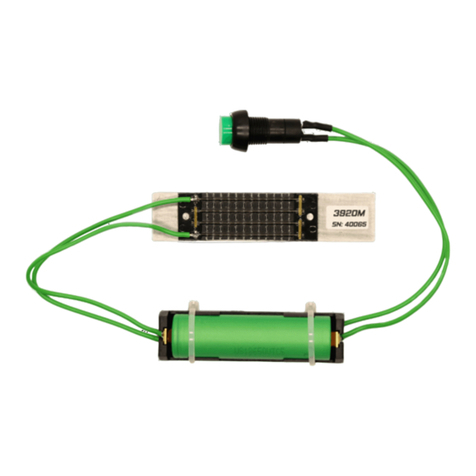PPI Epsilon 48 User manual

EPSILON
Self Tune PID
Process Controller
with Ramp / Soak Profile
User Manual
PRF

CONTENTS
1. FRONT PANEL LAYOUT 1
2. BASIC OPERATION 3
3. 7SET-UP MODE ACCESS AND OPERATION
4. 9CONTROL PARAMETERS
5. 11ALARM PARAMETERS
6. 13CONFIGURATION PARAMETERS
7. 16SUPERVISORY PARAMETERS
8. 18PROFILE PARAMETERS
9. 21OP2 & OP3 FUNCTION PARAMETERS
10. 25HARDWARE ASSEMBLY & CONFIGURATIONS
11. MECHANICAL INSTALLATION 30
12. ELECTRICAL CONNECTIONS 32
User Manual
EPSILON
1. FRONT PANEL LAYOUT 37
2. CONNECTIONS 39BACK PANEL TERMINAL
3. INPUT & OUTPUT HARDWARE JUMPER SETTINGS 42
For Size 48X48
For Size 96X96

1
READOUTS
The Upper Readout is a 4 digit, 7-segment bright red LED display and usually displays the PV (Process Value). In Set-up
Mode, the Upper Readout displays parameter values/options.
The Lower Readout is a 4 digit, 7-segment bright green LED display and usually displays Setpoint Value or % Output Power. In
Set-up Mode, the Lower Readout displays parameter names (prompts) .
INDICATORS
The front panel indicators are red LED’s that show the status related to control, alarms and operation mode. Refer Table 1.1
below for details.
FRONT PANEL LAYOUT
The controller front panel comprises of digital readouts, LED indicators and membrane keys as shown in Figure 1.1 below.
User Manual
EPSILON
Table 1.1
ALM
1
ALM
2
LED Status
OP1
• Indicates Output-1 ON/OFF status if the Control Output Type
is Relay / SSR.
• Remains OFF if the Control Output Type is DC Linear.
• Flashes while Alarm-1 is active.
• Flashes while the Ramp/Soak profile is in progress.
• Glows continuously if profile is in HOLD state.
• Remains OFF if profile is not in progress.
PRF
• Indicates Output-2 ON/OFF status if the Control Output Type
is Relay / SSR.
• Remains OFF if the Control Output Type is DC Linear.
OP2
• Flashes while Alarm-2 is active.
Figure 1.1
PPI
EPSILON
OP1 OP2 PRF
Upper Readout
Lower Readout
Profile Status
ENTER Key
UP Key
DOWN Key
PAGE Key
Output-1 Status
Output-2 Status
Alarm-1 Status
Alarm-2 Status
1
2
ALM
KEYS
There are four tactile keys provided on the front panel for configuring the controller, setting-up the parameter values and
selecting Operation Modes. Refer Table 1.2 for detailed key operations.
Section 1

2
Table 1.2
Symbol Key Function
Press to enter or exit set-up mode.
DOWN
UP
ENTER Press to store the set parameter value and to scroll to the next
parameter on the PAGE.
Press to increase the parameter value. Pressing once increases
the value by one count; keeping pressed speeds up the change.
Press to decrease the parameter value. Pressing once decreases
the value by one count; keeping pressed speeds up the change.
PAGE
User Manual
EPSILON

3
PV above Max. Range
PV below Min. Range
Message Error Type Cause
Thermocouple / RTD broken
Sensor Open
Under-range
Over-range
Table 2.1
Heat or Cool Power
Uni-directional Control
Heat Power Cool Power
Bi-directional Control
Figure 2.1
BASIC OPERATION
POWER-UP
Upon power-up, all displays and indicators are lit on for approximately 3 seconds. This is followed by the indication of the
controller model name on the Upper Readout and the firmware version on the Lower Readout, for
approximately 1 second.
MAIN DISPLAY MODE
After the Power-up display sequence, the Upper Readout starts showing the measured PV (Process Value) and the Lower
Readout displays the Setpoint Value. This is the MAIN Display Mode that shall be used most often.
% Output Power Indication
In PID control mode, the Lower Readout can be toggled using ENTER key to indicate either % output power or setpoint value
SP. The output power is indicated with the left most digit showing ‘P’, ‘H’ or ‘C’ depending upon uni-directional (Heat or Cool) or
bi-directional (Heat and Cool) control mode. Refer Figure 2.1 below.
Adjusting SP (Control Setpoint)
If permitted at Supervisory Level, the SP value can be directly adjusted on the Lower Readout in the MAIN Display Mode.
While the Lower Readout shows the control setpoint, step through the following sequence for adjusting the SP value :
1. Press and release UP or DOWN key once. The Lower Readout starts flashing.
2. Use UP/ DOWN keys to adjust the SP value.
3. Press and release ENTER key. The Lower Readout stops flashing and the new set value is registered and stored.
Tune Mode Indication
The Lower Readout flashes while the controller is Tuning. Do not disturb the process or alter any parameter values while
Tuning is in progress. The “Tune” message automatically disappears upon completion of Tuning procedure.
Profile Mode Indications
While a Profile Cycle is in progress, the front panel indicator ‘PRF’ flashes or glows steadily. The steady glowing indicates that
though the profile is active, it is currently in HOLD state. Also, the Lower Readout shows the Profile Setpoint instead of the
control setpoint SP. The % Output Power (if PID Control) can be viewed by toggling the Lower Readout using ENTER key.
Note
While Profile Cycle is in progress, the Control Setpoint SP can still be adjusted on Lower Readout. While the Lower Readout shows Profile
Setpoint, use UP/DOWN keys to adjust the control setpoint SP as described earlier.
PV Error Indications
The PV Error type is flashed on the Upper Readout. For different errors and the causes, refer Table 2.1 below.
User Manual
EPSILON
Section 2

4
CONTROL / ALARM STATUS UNDER PV ERROR CONDITIONS
a) The tuning, if in progress, is aborted.
b) The Profile Cycle, if in progress, enters in HOLD state.
c) Under Over-range or Under-range error condition, all the control outputs are switched off. However, under Sensor Open
error, the PID control output power is maintained at the value set for the parameter “Sensor Break Output Power” on
PAGE-12.
d) For Alarm activation, the under-range condition is treated as minimum PV, whereas the over-range and open conditions
are treated as maximum PV. Thus, Process High, positive Deviation Band and Window Band alarms activate under Over-
range/Open error. Similarly, Process Low, negative Deviation Band and Window Band alarms activate under Under-
range error.
STANDBY MODE
This mode allows the operator to put the controller in ‘indication-only’ mode wherein all the output control signals as well as
Alarm Relays are forced OFF. This may be desired prior to the start of a new process batch.
If enabled at supervisory level, the standby mode can be activated or de-activated by setting the parameter ‘Standby’ to Yes or
No respectively. The standby parameter is available on operator page, explained later in the section.
Notes:
1. The Standby and Tuning modes are mutually exclusive. If Standby mode is activated while the controller is tuning, the controller aborts
tuning operation and enters Standby mode.
2. If the Power Supply to the controller is switched-off or a Power-failure occurs while the controller is operating in Standby mode; upon
resumption of power, the controller continues to operate in Standby mode.
OPERATOR PAGE AND PARAMETERS
The controller provides a separate page that contains parameters that require frequent settings by the operator. The page is
called Operator Page and the parameters are called Operator Parameters. The availability of operator parameters is
controlled at supervisory level and the parameter setting is not affected by the master lock status.
Accessing Operator Page & Adjusting Parameters
Step through the following sequence to open the operator page and to adjust the operator parameter values.
1. Press and release PAGE key. The Lower Readout shows (PAGE) and Upper Readout shows (0).
2. Press ENTER key. The Lower Readout shows prompt for the first available operator parameter and the Upper Readout
shows value for the parameter.
3. Use UP / DOWN keys to adjust the value and then press ENTER key to store the set value and scroll to next parameter.
The controller automatically reverts to MAIN Display Mode upon scrolling through the last operator parameter. Alternatively,
use PAGE key to return to MAIN Display Mode.
The operator parameters are described in Table 2.2. Note that the parameters presented on operator page depend upon the
functions selected/enabled and supervisory level permissions.
The operator parameter list mainly includes :
a) Profile related commands like Start, Abort, Pause, Skip etc.
b) Standby mode entry / exit.
c) Control Setpoint (SP) value.
d) Alarm-1 Setpoint / Band values.
e) Alarm-2 Setpoint / Band values.
User Manual
EPSILON

5
No
Yes
(Default : No)
No
Yes
(Default : No)
No
Yes
(Default : No)
No
Yes
(Default : No)
No
Yes
(Default : No)
No
Yes
(Default : No)
Table 2.2
Parameter Description Settings
(Default Value)
Setpoint Low Limit
to Setpoint High Limit
(Default : -199)
Setpoint Low Limit
to Setpoint High Limit
(Default : -199)
This parameter is available if Output-2 (OP2) and / or Output-3
(OP3) Relay/SSR is programmed to turn ON as an ‘End-of-Profile’
signal. Set this parameter to ‘Yes’ (after end of profile is reached)
to acknowledge the Alarm and to turn OFF the output.
END OF PROFILE ACKNOWLEDGE
These parameters are mutually exclusive. Use ‘Start’ command to
commence a new Profile Cycle and ‘Abort’ command to abort /
terminate a running Profile cycle. Set the value to ‘Yes’ to issue the
command.
PROFILE START COMMAND
These parameters are mutually exclusive. Use ‘Start’ command to
commence a new Profile Cycle and ‘Abort’ command to abort /
terminate a running Profile cycle. Set the value to ‘Yes’ to issue the
command.
PROFILE ABORT COMMAND
This parameter is available while a profile cycle is in progress and
can be used to pause (halt) the profile as long as desired. Set the
command to ‘Yes’ for pausing and ‘No’ to continue. Under Pause
state, the ramp segment stops ramping while the soak segment
stops counting down the timer.
PROFILE PAUSE COMMAND
Use this command to terminate a running profile segment and to
move to the next segment. Skipping the last segment will result in
completion of the current profile cycle.
SEGMENT SKIP COMMAND
This parameter is available and applicable only if Standby mode is
enabled at supervisory level. Set the parameter value to ‘Yes’ or
‘No’ for entering and exiting the Standby mode, respectively.
(DE)ACTIVATE STANDBY MODE
This is the Setpoint value that the controller respects for the
control purpose while it is not running a profile or not in standby /
tuning mode.
CONTROL SETPOINT
The alternate control setpoint that the controller respects for
control purpose when selected through remote input terminals.
This parameter is available only if the hardware Remote Input
module is fitted and if the selected Utility Option is Auxiliary
Setpoint.
AUXILIARY CONTROL SETPOINT
User Manual
EPSILON

6
ALARM-2 SETPOINT
The Definitions / Descriptions are same as Alarm 1 but applied to
Alarm 2.
ALARM-1 WINDOW BAND
The Definitions / Descriptions are same as Alarm 1 Setpoint
ALARM-1 DEVIATION BAND
The Definitions / Descriptions are same as Alarm 1 Setpoint
The Definitions / Descriptions are same as Alarm 1 but applied to
Alarm 2.
ALARM-2 DEVIATION BAND
The Definitions / Descriptions are same as Alarm 1 but applied to
Alarm 2.
ALARM-2 WINDOW BAND
Parameter Description Settings
(Default Value)
Throughout the range for
the selected Input Type
(Default :
For Process Low : -199
For Process High : 1376)
The setpoint / Band value (depending upon the type of Alarm) for
Alarm-1. This parameter is not available if the selected Alarm type
is ‘None’.
ALARM-1 SETPOINT
Throughout the range for
the selected Input Type
(Default :
For Process Low : -199
For Process High : 1376)
(Default : 5 or 5.0)
-999 to 999 or
-999.9 to 999.9
3 to 999 or
0.3 to 999.9
(Default : 5 or 5.0)
(Default : 5 or 5.0)
-999 to 999 or
-999.9 to 999.9
3 to 999 or
0.3 to 999.9
(Default : 5 or 5.0)
User Manual
EPSILON

7
The various parameters are arranged in different groups, called PAGES, depending upon the functions they represent. Each
group is assigned a unique numeric value, called PAGE NUMBER, for its access.
The parameters are always presented in a fixed format: The Lower Readout displays the parameter prompt (Identification
Name) and the Upper Readout displays the set value. The parameters appear in the same sequence as listed in their
respective sections.
SET-UP MODE
The Set-up Mode allows the user to view and modify the parameter values. Follow the steps below for setting the parameter
values:
1. Press and release PAGE key. The Lower Readout shows (PAGE) and Upper Readout shows (0).
2. Use UP / DOWN keys to set the desired PAGE NUMBER.
3. Press and release ENTER key. The Lower Readout shows the prompt for the first parameter listed in the set PAGE and
the Upper Readout shows its current value. If the entered PAGE NUMBER is invalid (contains no parameter list or any
associated function), the controller reverts to the MAIN Display Mode.
4. Press and release the ENTER key until the prompt for the required parameter appears on the Lower Readout. (The last
parameter in the list rolls back to the first parameter).
5. Use UP / DOWN keys to adjust the parameter value. The display flashes if UP key is pressed after reaching the maximum
value or DOWN key is pressed after reaching the minimum value.
6. Press and release the ENTER key. The new value gets stored in the controller’s non-volatile memory and the next
parameter in the list is displayed.
The Figure 3.1 illustrates the example of altering the value for the parameter ‘Control Output’.
Figure 3.1
SET-UP MODE : ACCESS AND OPERATION
Notes
1. Each page contains a fixed list of parameters that are presented in a pre-determined sequence. Note however that the availability of a
few parameters, called Conditional Parameters, depend upon the settings for some other parameters. For example, the parameter
‘Control Hysteresis’ for Output-1 is available only if, the set value for the parameter ‘Control Action’ is ‘On-Off’.
2. To exit the set-up mode and return to the MAIN Display Mode, press and release PAGE key.
3. If no key is pressed for approximately 30 seconds, the set-up mode times out and reverts to the MAIN Display Mode.
User Manual
EPSILON
Main Display
Mode
Default Page Page Number
Press PAGE
key to enter
Set-up Mode
Use UP/DOWN
key to set the
Page Number
Press ENTER
key to open
the Page
Use UP/DOWN
keys to change
the value
Press ENTER
key to store the value &
move to next parameter
First Parameter
on Page-12
New Parameter
value
Next Parameter
on Page-12
or or
Section 3

8
MASTER LOCKING
The controller facilitates locking all the PAGES (except Operator PAGE) by applying Master Lock Code. Under Locking, the
parameters are available for view only and can not be adjusted. The Master Lock, however, does not lock the operator
parameters. This feature allows protecting the rather less frequently used parameters against any inadvertent changes while
making the frequently used operator parameters still available for any editing.
For enabling / disabling the Lock, step through the following sequence:
Locking
1. Press and release PAGE key while the controller is in the MAIN Display Mode. The Lower Readout shows PAGE and the
Upper Readout shows 0.
2. Use UP / DOWN keys to set the Page Number to 123 on the Upper Readout.
3. Press and release ENTER key. The controller returns to the MAIN Display Mode with the Lock enabled.
The Figure 3.2 below illustrates the Locking procedure.
Figure 3.2
UnLocking
Repeat the Locking procedure twice for unlocking.
User Manual
EPSILON
MAIN Display
Mode
Default Page Locking Code MAIN Display
Mode
Press PAGE
key to enter
Set-up Mode
Use UP/DOWN
key to set the
‘Locking Code’
Press ENTER key
to Lock & Return to
Main Mode
or

9
The parameters presented on PAGE-10 depend upon the type of algorithm selected for the control purpose, viz., On-Off,
Pulsed On-Off and PID. The parameter list further extends if the selected control mode is bi-directional (that is, heat-cool
control). Refer Table 4.1 for the parameter descriptions and settings.
CONTROL PARAMETERS
Table 4.1
Visit www.ppiindia.net. Refer technical notes on CONTROL and TUNING for detailed understanding of the
parameters / terminologies used for describing control parameters in this section.
0 to 600 Seconds
(Default : 16 Sec.)
0 to 3600 Seconds
(Default : 100 Sec.)
PROPORTIONAL BAND
(Available for PID Control only)
Sets proportional gain (% power per unit error). Defined in same
units and resolution as that for PV.
INTEGRAL TIME
(Available for PID Control only)
Sets integral time constant in Seconds. Setting the value to 0,
cuts-off the integral action.
DERIVATIVE TIME
(Available for PID Control only)
Sets derivative time constant in Seconds. Setting the value to 0,
cuts-off the derivative action.
1 to 999 Units
(Default : 50 units)
Settings
(Default Value)
Parameter Description
0.5 to 100.0 Seconds
(in steps of 0.5 secs.)
(Default : 10.0 Sec.)
0.1 to 10.0
(Default : 1.0)
0.5 to 100.0 Seconds
(in steps of 0.5 secs.)
(Default : 10.0 sec.)
1 to 999
(Default : 2)
HYSTERESIS
(Available for On-Off or Pulsed On-Off Control only)
Sets differential (dead) band between On-Off switching for OP1.
(Available for PID Control with bi-directional, that is, Heat-Cool mode)
Sets the On + Off cycle time in Seconds for time proportional
power output through Relay / SSR for OP2.
*COOL CYCLE TIME
(Available for PID Control with bi-directional, that is, Heat-Cool mode)
Sets the ratio of cooling power to the heating power.
*RELATIVE COOL GAIN
CYCLE TIME
(Available for PID Control only)
Sets the total ‘On + Off’ time in Seconds for time proportional
power output through Relay / SSR for OP1.
Pulse ON Time
to 120.0 Seconds
(Default : 2.0 sec.)
PULSE TIME
(Available for Pulsed On-Off Control only)
Sets the total ‘On + Off’ pulse time in Seconds for Relay / SSR
output for OP1.
User Manual
EPSILON
Section 4

10
Parameter Description Settings
(Default Value)
Cool ON Time
to 120.0 Seconds
(Default : 2.0)
0.1 to Value set for
Cool Pulse Time
(Default : 1.0)
0 to Power High
(Default : 0)
0.1 to Value set
for Pulse Time
(Default : 1.0)
1 to 999
(Default : 2)
HEAT POWER LOW
(Available for PID Control only)
Sets the lower % Output power limit for OP1.
(Available for Pulsed On-Off Control with bi-directional mode)
Sets the ON pulse time in Seconds for Relay/SSR Output for OP2.
*COOL ON TIME
(Available for Pulsed On-Off Control with bi-directional mode)
Sets the total ‘On + Off’ pulse time in Seconds for Relay / SSR
Output for OP2.
*COOL PULSE TIME
(Available for On-Off or Pulsed On-Off Control with bi-directional mode)
Sets differential (dead) band between On-Off switching for OP2.
*COOL HYSTERESIS
ON TIME
(Available for Pulsed On-Off Control only)
Sets the ON pulse time in Seconds for Relay/SSR Output for OP1.
HEAT POWER HIGH
(Available for PID Control only)
Sets the higher % Output power limit for OP1 .
Power Low to 100
(Default : 100)
0 to Cool Power High
(Default : 0)
Cool Power Low to 100
(Default : 100)
(Available for PID Control with bi-directional, that is, Heat-Cool mode)
Sets the higher % Output power limit for OP2.
*COOL POWER HIGH
(Available for PID Control with bi-directional, that is, Heat-Cool mode)
Sets the lower % Output power limit for OP2.
*COOL POWER LOW
* The parameters marked with asterisk symbol are available only if the controller is supplied with Bi-Directional control (Heat +
Cool) mode option.
User Manual
EPSILON

11
None
Process Low
Process High
Deviation Band
Window Band
(Default : None)
ALARM-2 TYPE
Select the Alarm-2 activation type. Selecting ‘None’ will disable
the alarm and suppress all the related parameters for Alarm-2.
ALARM-1 INHIBIT
Set to ‘Yes’ to suppress Alarm-1 activation upon power-up or
process start-up.
ALARM-1 HYSTERESIS
Sets differential (dead) band between Alarm-1 switching ON and
OFF states.
ALARM-1 WINDOW BAND
(Available for Window Band Alarm-1 Type)
Sets symmetrical positive and negative deviation (offset) limits
from control setpoint for both High and Low Alarm-1 activation.
ALARM-1 TYPE
Select the Alarm-1 activation type. Selecting ‘None’ will disable
the alarm and suppress all the related parameters for Alarm-1.
Min. to Max. Range specified
for the selected Input Type
(Default : Min or Max Range)
ALARM-1 DEVIATION BAND
(Available for Deviation Band Alarm-1 Type)
Sets positive or negative deviation (offset) limit from control
setpoint for High or Low Alarm-1 activation, respectively.
ALARM-1 SETPOINT
(Available for Process High or Process Low Alarm-1 Type)
Sets Alarm limit independent of control setpoint for Alarm-1.
None
Process Low
Process High
Deviation Band
Window Band
(Default : None)
Parameter Description Settings
(Default Value)
-999 to 999 or
-999.9 to 999.9
(Default : 5)
3 to 999
(Default : 5)
1 to 999
(Default : 2)
No
Yes
(Default : No)
ALARM PARAMETERS
The parameters required for configuring Alarm-1 and Alarm-2 are grouped on PAGE-11. The configuration includes selecting
the type of Alarm, setting the hysteresis value, enabling / disabling start-up alarm suppression, etc. Refer Table 5.1 for
parameter description & settings.
Visit www.ppiindia.net. Refer technical notes on ALARM for detailed understanding of the parameters/terminologies
used for describing the Alarm parameters in this section.
Table 5.1
User Manual
EPSILON
Section 5

12
Parameter Description Settings
(Default Value)
-999 to 999
(Default : 5)
3 to 999
(Default : 5)
1 to 999
(Default : 2)
ALARM-2 INHIBIT
Set to Yes to suppress Alarm-2 activation upon power-up or
process start-up.
ALARM-2 HYSTERESIS
Sets differential (dead) band between Alarm-2 switching ON and
OFF states.
ALARM-2 WINDOW BAND
(Available for Window Band Alarm-2 Type)
Sets symmetrical positive and negative deviation (offset) limits
from control setpoint for both High and Low Alarm-2 activation.
ALARM-2 DEVIATION BAND
(Available for Deviation Band Alarm-2 Type)
Sets positive or negative deviation (offset) limit from control
setpoint for High or Low Alarm-2 activation, respectively.
ALARM-2 SETPOINT
(Available for Process High or Process Low Alarm-2 Type)
Sets Alarm limit independent of control setpoint for Alarm-2.
Min. to Max. Range specified
for the selected Input Type
(Default : Min or Max Range)
No
Yes
(Default : No)
User Manual
EPSILON

13
Reverse
Normal
(Default : Reverse)
°C
°F
(Default : C)°
Relay
SSR
0 - 20 mA
4 - 20 mA
0 - 5 V
0 - 10 V
(Default : Relay)
PV RANGE LOW
( Available for DC Linear Inputs)
Sets process value corresponding to minimum DC Linear signal
input (e.g., 0 V, 0 mA, 4 mA, etc.)
PV UNITS
(Available for Thermocouple / RTD Inputs)
Selects temperature measurement units in °C or °F .
PV RESOLUTION
(Not Available for Thermocouple Inputs)
Sets the process value indication resolution (decimal point). All
the resolution based parameters (control setpoint, hysteresis,
alarm setpoints etc.) then follow this resolution setting.
INPUT TYPE
Select Input type in accordance with the type of Thermocouple or
RTD sensor or transducer output connected for process value
measurement. Ensure proper hardware jumper settings.
CONTROL LOGIC
Select Reverse (heat logic) or Direct (cool logic).
CONTROL ACTION
Select appropriate Control Algorithm suited for process
requirement.
CONTROL OUTPUT (OP1) TYPE
Select the output type in accordance with the hardware
configuration for Output-1 (OP1).
Refer Table 6.2
(Default : 1)
Pulse
On-Off
PID
(Default : PID)
Parameter Description Settings
(Default Value)
-1999 to 9999
(Default : 0)
Refer Table 6.2
(Default : Type K)
Table 6.1
CONFIGURATION PARAMETERS
The controller is provided with a variety of hardware options and software features to cater to a host of applications. The
controller thus needs to be appropriately configured in terms of inputs / outputs and other features like control algorithm, digital
filter, etc.
The PAGE-12 presents configuration parameters that are listed below in Table 6.1 .
User Manual
EPSILON
Section 6

14
-1999 to 9999
(Default : 1000)
PV RANGE HIGH
( Available for DC Linear Inputs)
Sets process value corresponding to maximum DC Linear signal
input (e.g., 5 V, 10 V, 20 mA, etc.)
Parameter Description Settings
(Default Value)
SETPOINT LOW LIMIT
Sets minimum permissible control setpoint value.
(Default : -199)
Min. Range for the
selected Input Type to
Setpoint High Limit
OFFSET FOR PV
This value is algebraically added to the measured PV to derive the
final PV that is displayed and compared for alarm / control.
Final PV = Measured PV + Offset
0.5 to 60.0 Seconds
(in steps of 0.5 Seconds)
(Default : 2.0 Sec.)
SENSOR BREAK OUTPUT POWER
(Available for PID control only)
In case of Thermocouple / RTD broken or disconnected, the
controller outputs this power value under open loop condition.
-100 to 100
(Default : 0)
DIGITAL FILTER TIME CONSTANT
Sets the time constant, in Seconds, for the low-pass digital filter
applied to the measured PV. The filter helps smoothening /
averaging the signal input and removing the undesired noise.
SETPOINT HIGH LIMIT
Sets maximum permissible control setpoint value.
Setpoint Low Limit to
Max. Range for the
selected Input Type
(Default : 1376)
-199 to 999 or
-199.9 to 999.9
(Default : 0)
User Manual
EPSILON

15
Table 6.2
Resolution
Option What it means Range (Min. to Max. )
Type J Thermocouple
Type K Thermocouple
Type T Thermocouple
0 to +960°C / +32 to +1760°F
-200 to +1376°C / -328 to +2508°F
-200 to +385°C / -328 to +725°F
Type R Thermocouple
Type S Thermocouple
Type B Thermocouple
Type N Thermocouple
0 to +1770°C / +32 to +3218°F
0 to +1765°C / +32 to +3209°F
0 to +1825°C / +32 to +3218°F
0 to +1300°C / +32 to +2372°F
Fixed
1°C / 1°F
0 to 20mA DC current
4 to 20mA DC current
0 to 50mV DC voltage
0 to 200mV DC voltage
0 to 1.25V DC voltage
0 to 5.0V DC voltage
0 to 10.0V DC voltage
1 to 5.0V DC voltage
3-wire, RTD Pt100
-1999 to +9999 units
-199 to +600°C / -328 to +1112°F
-199.9 to 600.0°C / -199.9 to 999.9°F
or
User settable
1°C / 1°F
or
0.1°C / 0.1°F
User settable
1 / 0.1 / 0.01/
0.001 units
Reserved for customer specific Thermocouple type not listed
above. The type shall be specified in accordance with the
ordered (optional on request) thermocouple type.
User Manual
EPSILON

16
Yes
No
(Default : No)
Enable
Disable
(Default : Disable)
Enable
Disable
(Default : Enable)
Enable
Disable
(Default : Enable)
Enable
Disable
(Default : Disable)
Enable
Disable
(Default : Disable)
Enable
Disable
(Default : Disable)
PROFILE ABORT COMMAND
ON OPERATOR PAGE
Supervisory control over availability of ‘Profile-Abort’ command on
Operator Page. ‘Enable’ for availability.
ALARM SP ADJUSTMENT
ON OPERATOR PAGE
Supervisory permission for Alarm setpoint adjustments on
Operator Page. Set to ‘Enable’ for permission.
SP ADJUSTMENT ON OPERATOR PAGE
Supervisory permission for control setpoint editing on Operator
Page. Set to ‘Enable’ for permission.
SP ADJUSTMENT ON LOWER READOUT
Supervisory permission for control setpoint editing on Lower
Readout. Set to ‘Enable’ for permission.
(Available for PID control with Overshoot Inhibit enabled )
This parameter adjusts the effectiveness of the Overshoot Inhibit
feature. Increase the value if the overshoot is curbed but the PV
takes longer to reach the SP. Decreases the value if the overshoot
persists.
OVERSHOOT INHIBIT FACTOR
OVERSHOOT INHIBIT
(Available for PID control only)
Enabling this feature controls the PV rise or fall upon process
start-up in order to reach the control setpoint with as minimum
overshoot as possible.
STANDBY MODE
Supervisory control over availability of Standby (entry / exit)
command on Operator Page. ‘Enable’ for availability.
SELF-TUNE COMMAND
(Available for PID control only)
Set to ‘Yes’ to initiate a new tuning cycle or set to ‘No’ to abort a
tuning operation in progress.
SUPERVISORY PARAMETERS
The supervisory level responsibilities include exercising control over operator, making process related decisions and
controlling the availability of process data for remote use. The PAGE-13 parameters allow implementation of supervisory level
decisions. The Table 7.1 below list supervisory parameters.
Table 7.1
Settings
(Default Value)
User Manual
EPSILON
Parameter Description
1.0 to 2.0
(Default : 1.0)
Section 7

17
(Default : Even)
None
Even
Odd
Auxiliary
Setpoint
Serial Comm.
None
(Default : Serial Comm.)
4800
9600
19200
38400
57600
(Default : 9.6 )
COMMUNICATION WRITE ENABLE
Setting to ‘No’ disallows the host to set or modify any parameter
value. The value however can be read by the host.
CONTROLLER ID NUMBER
Unique numeric code assigned to the controller for identification
by the host. Set the value as required by the host.
COMMUNICATION PARITY
One of the communication error trapping features. Select the data
packet parity as implemented by the host protocol.
BAUD RATE
Communication speed in ‘Bits per Second’. Set the value to match
with the host baud rate.
Parameter Description Settings
(Default Value)
UTILITY OPTION SELECTION
Enable / Disable the available utility feature. Set to ‘None’ for
disabling utility feature.
1 to 127
(Default : 1)
No
Yes
(Default : No)
User Manual
EPSILON

18
PROFILE PARAMETERS
The profile utility requires profile configuration and profile settings. Also, the utility facilitates viewing the various status related
information and allows on-line alterations of the operation parameters. To simplify profile operation, the rather large list of
parameters has been split in multiple pages as under.
PAGE-16 : Profile Configuration
Configure profile in terms of the number of segments, number of cycles (repeats), output status upon profile completion and
power fail recovery method. Refer Table 8.1.
PAGE-14 : Profile Settings
Set individual profile segment for the target setpoint, time interval, hold back type and hold back value. Refer Table 8.2.
PAGE-1 : Status Information
View the current status of a running profile such as the segment type in progress, the running ramping setpoint value or
balance soak time, the number of repeats remaining, etc. Refer Table 8.3 .
PAGE-2 : On-line Alterations
The profile facilitates altering the running segment of the profile for the current execution without affecting the profile settings
on PAGE-14. That is, the changes made to the parameter values become applicable for the current execution of the segment
only. This allows adjusting the profile, if required, in accordance to some unexpected process changes. Refer Table 8.4.
PAGE-0 (Operator Page) : Profile Commands
(Refer section “Basic Operation’’ for parameter listing and definitions)
Start a new profile cycle or abort a running profile cycle. Also, a running segment can be paused or skipped.
Except for operator page, all the pages along with the parameter listing and definitions are described below.
Visit www.ppiindia.net. Refer technical notes on PROFILE for detailed understanding of the parameters/
terminologies used for describing the profile parameters in this section.
COMMON HOLDBACK
The profile allows either Common or Independent Holdback type
and value for each of the profile segments. Set this parameter to
‘Yes’ if common settings are desired for the Holdback feature.
Set the number of times the profile is to be repeated before end of
profile. The last segment of the profile cycle is followed by the first
segment for the next repeat.
NUMBER OF REPEATS
NUMBER OF SEGMENTS
Set the number of segments to constitute the setpoint profile.
ENABLING PROFILE FEATURE
Enable or Disable the setpoint profile feature. Disabling the
feature will suppress all other profile related parameters.
Parameter Description Settings
(Default Value)
Profile Configuration Parameters : PAGE 16
1 to 9999
(Default : 1)
1 to n
(n = 4, 8, 12 or 16 depending
on factory configuration)
(Default : n)
Enable
Disable
(Default : Disable)
No
Yes
(Default : No)
Table 8.1
User Manual
EPSILON
Section 8
This manual suits for next models
1
Table of contents
Other PPI Controllers manuals
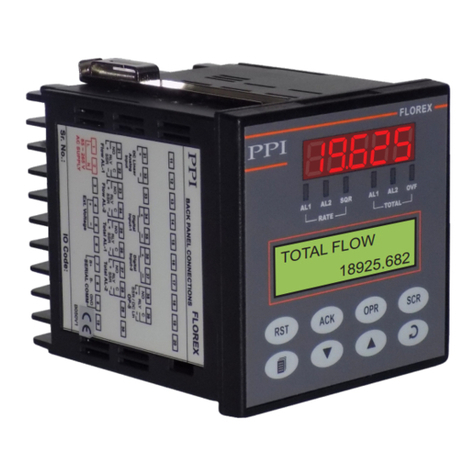
PPI
PPI FLOREX User manual

PPI
PPI neuro 102Plus User manual
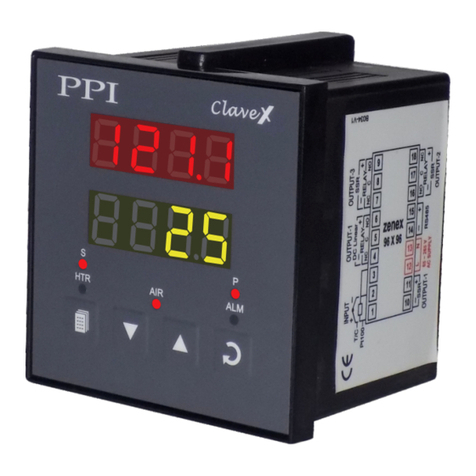
PPI
PPI claveX Series User manual
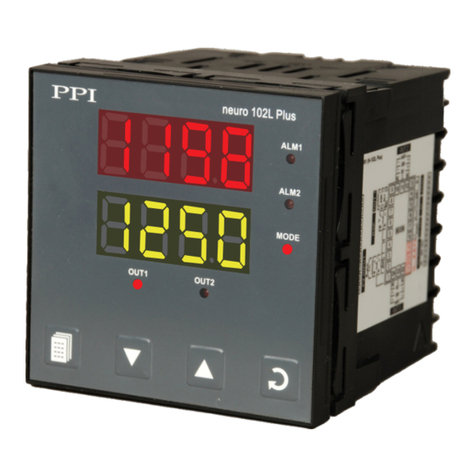
PPI
PPI neuro 102L Plus User manual

PPI
PPI neuro 105 User manual
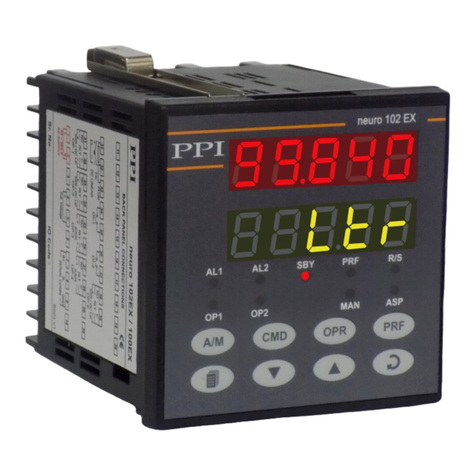
PPI
PPI Neuro 102EX User manual
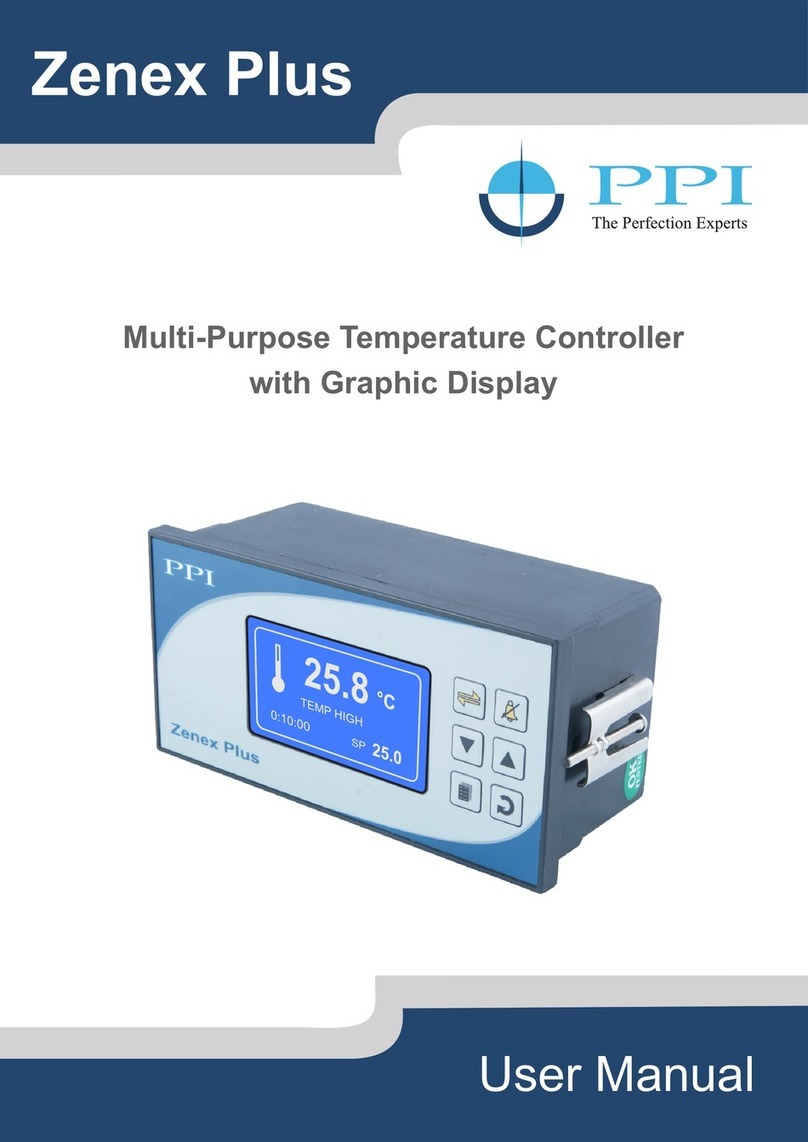
PPI
PPI Zenex Plus User manual
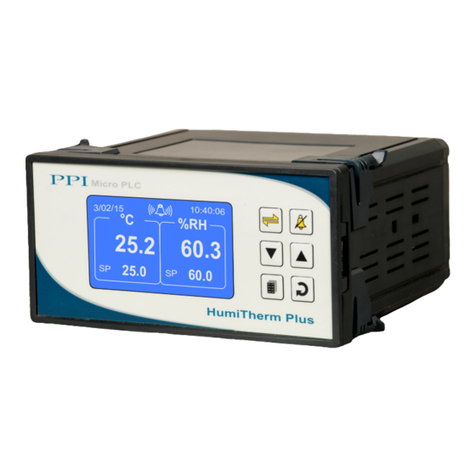
PPI
PPI HumiTherm Plus User manual
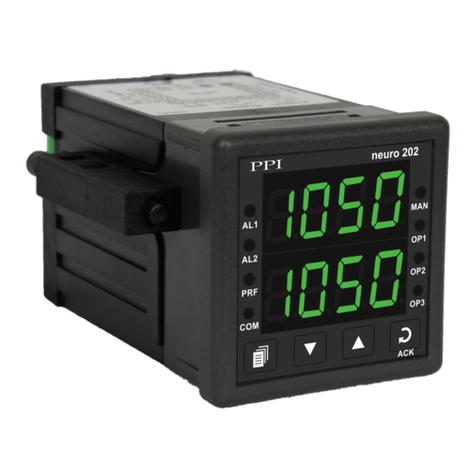
PPI
PPI neuro 202 User manual

PPI
PPI Clavex Pro User manual
Popular Controllers manuals by other brands
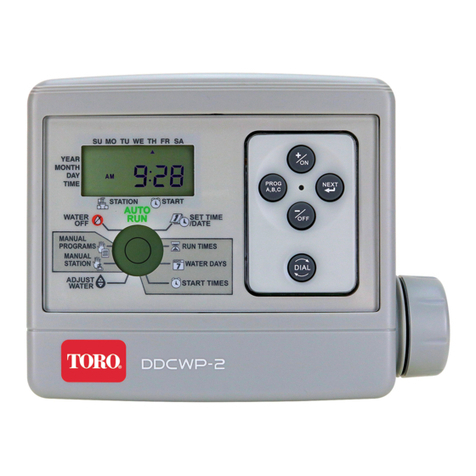
Toro
Toro DDCWP Series Installation and operating instructions
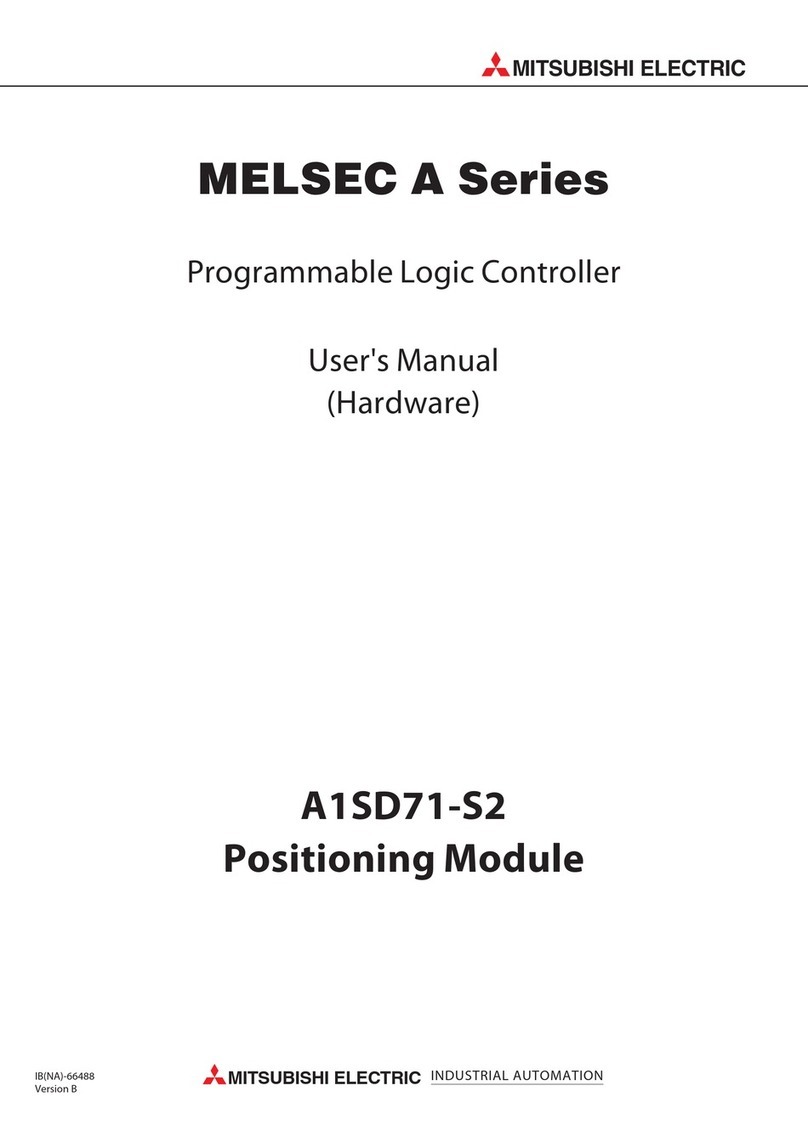
Mitsubishi Electric
Mitsubishi Electric MELSEC A1SD71-S2 user manual
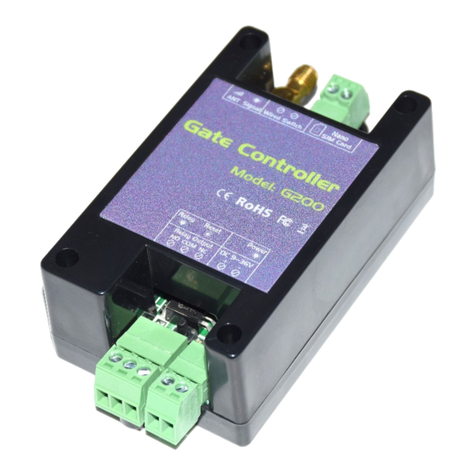
BADODOSECURITY
BADODOSECURITY G200 quick guide
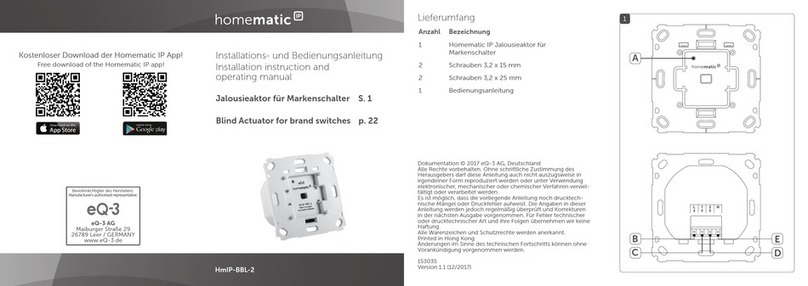
Homematic IP
Homematic IP HmIP-BBL-2 Installation instructions and operating manual
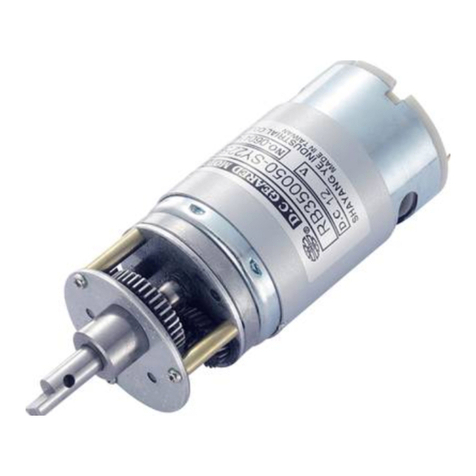
ModelCraft
ModelCraft 23 72 32 operating instructions

Sunricher
Sunricher SR-2820 quick guide
